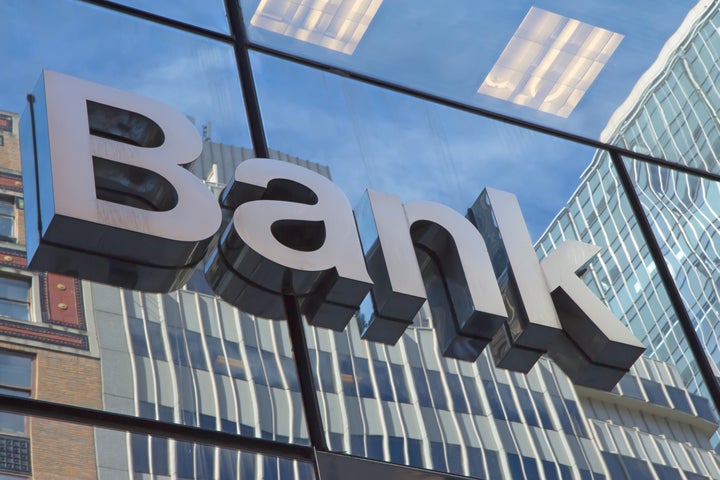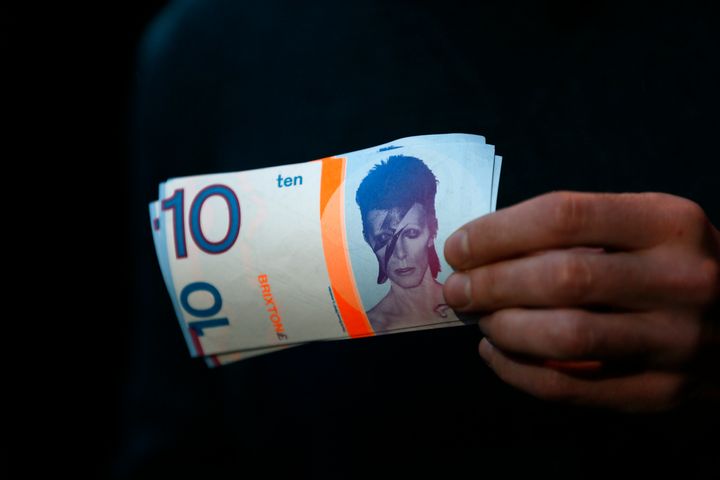There have always been movements with dissenting views on the money system: how it runs and whom it works for. But in the aftermath of the 2008 financial crisis, a new wave of money agitators has emerged, each with very distinct ideas about what money means. From bitcoin evangelists to advocates of modern monetary theory, they have divided into warring factions.
To understand them and what they’re fighting for, it’s important to understand the system they’re challenging.
Our money system is underpinned by national central banks and treasuries that issue foundational “base” money. This includes the physical cash in our wallets and also reserves, the special forms of digital money that commercial banks hold in their central bank accounts, which are inaccessible to us.
These commercial banks then boost the money supply by issuing a second layer of money on top of the central bank money layer, through a process called credit creation of money (sometimes called “fractional reserve banking”) to create commercial bank money, which we see as bank deposits in our bank accounts.
The details are subtle and complex ― especially at the international level ― but the interaction of these players issuing money and taking it out of circulation makes the money supply expand and contract as if it were breathing. Monetary reform groups target different elements of this. Here are five of them.
1. Government Money Warriors

We say that the sun rises, but in reality the sun stays fixed and the illusion of sunrise is created by the Earth turning. Modern monetary theory argues that a similar delusion occurs in our thinking about government money ― we often claim that a federal government “raises money” through taxation and then spends it, but actually it is government institutions that originally issue money by spending it into existence and then withdrawing it from circulation by demanding it back in taxation. If the government issues money, then why would it have to raise money by asking for it back?
The idea that a federal government can run out of money like an ordinary household or business is an illusion, argue advocates of modern monetary theory. A government can only run out of money if it either does not issue its own sovereign currency (like the European nations, which have opted for the euro) or if an artificial political limit has been placed on how much money it can issue. In the latter situation, governments must first recall money via tax (and other means) before reissuing it elsewhere.
This is why modern monetary theory advocates are incredulous about conservatives who want to block spending on education and health care by saying we don’t have the money to pay for it. “Governments with monopoly control over their currency can always pay for their policy priorities,” says Pavlina Tcherneva, an economics professor at the Levy Economics Institute at New York’s Bard College.
Under modern monetary theory, if there are unemployed people who want to work and material resources for them to work with, a federal government can issue new money without causing inflation because the increase in money supply will be met with an increase in production. “The goal is to use the public purse to serve the broad public interest without accelerating inflation,” said Stephanie Kelton, professor of public policy and economics at Stony Brook University and former senior adviser to Sen. Bernie Sanders (I-Vt.).
2. Bank Money Reformers

Other reformers target the commercial bank money system. They argue it creates economic instability, over-indebtedness and concentration of power in the hands of banks ― the very banks that led us into the 2008 financial crisis.
Bank money reform groups include the American Monetary Institute, Positive Money, and the International Movement for Monetary Reform.
Commercial banks create new money when they issue loans. The moderate wing of the bank reform movement argues that, because the government grants them this privilege, banks should be subject to greater democratic scrutiny over their lending. The hard-line wing believes bank creation of money should be banned altogether.
The movement to curtail bank money is politically more diverse than modern monetary theory; it’s been supported by certain libertarians, including the late economist Murray Rothbard, neoclassical economists such as Irving Fisher, as well as left-wing proponents, such as the U.K.’s Green Party, which believes bank money-creation leads to environmental crises and corporate domination.
Their prescriptions are not uniform: Positive Money, a research and campaigning organization in Britain, calls for the power to create money to be granted exclusively to a democratic, accountable and transparent public body, creating a “sovereign money” system in which we might all have our own accounts at the central bank. This is distinguished from full-reserve banking, which would require your bank to have the reserves to fully back your account.
3. Cryptocurrency Crusaders

Cryptocurrency crusaders not only reject both national and bank money systems, but also reject the entire concept of credit money (money that is “created from nothing” through law or social agreement), calling for it to be replaced with “commodity money” (money that is “created from something” through production). They have inherited the baton from “goldbugs,” who called for gold to be money.
The movement, which began with Bitcoin, argues that the best money system is one that’s outside of human politics. This comes from a philosophical tradition that says systems should be governed by the boundaries of God, physics or math, rather than laws set by politicians. With gold, for example, these natural boundaries would be geology: how much gold can be found and extracted. In Bitcoin’s case, the boundary comes from the fact that the digital system sets a hard limit on how much digital money can be issued and then forces participants to “mine” it as if it were a commodity.
Because Bitcoin hard-liners believe true money is a limited-supply good that must be extracted through production, they claim that fiat money ― created by banks or countries ― is artificial or deceitful money under the control of corrupt powers. There’s a puritanical edge to these cryptocurrency crusaders, who mistrust human institutions and trust in an abstract ‘godlike’ order of mathematics and markets.
While theories like MMT hinge on collective human political institutions, crypto crusaders see politics as foolish. This distrustful attitude shows: The movement sometimes seems as much at war with itself as with the fiat money system, with bitter in-fights between supporters of different crypto-tokens.
They are, however, the richest of all monetary reformers, with many crypto users having ironically become millionaires in the fiat currency they claim to dislike so much.
4. The Localists

There’s a whole history of alternative non-government money prior to cryptocurrency. These original alternative currency variants include mutual credit systems, timebanks (where time is used to measure how many credits you earn), local community currencies, such as the U.K.-based Brixton pound, and systems like the Swiss Wir, a currency used between businesses.
The tradition is also skeptical of large-scale government-bank money systems, but rather than calling for them to be replaced by a robotic algorithm, they believe small-scale communities should take control to issue money locally.
Unlike cryptocurrency advocates, they have no problem with money being “created out of nothing.” Rather they have a problem with who gets to do that and at what scale. They believe large-scale systems alienate people and dissolve close-knit communities.
A mutual credit system like Sardex in Sardinia, for example, does not reject the idea of money expanding and contracting, but it brings together an island community to decide on what terms that occurs.
While the other movements are outspoken, local complementary currency enthusiasts are often humble and below-the-radar, working for low pay to build resilient community structures.
“Local currencies change how money is issued,” says Duncan McCann of the New Economics Foundation, “how it circulates and what it can be spent on in order to re-localize economies, encourage environmental behaviour, and promote small businesses.”
5. The Crypto-Credit Alliance: Mutual credit meets blockchain technology

This is the least-known or developed of the movements, but is perhaps the most exciting. Nascent initiatives, such as Trustlines, Holochain, Sikoba, Waba and Defterhane, seek to hybridize older alternative currency systems like mutual credit with the blockchain architectures that underpin cryptocurrencies. They share common ground with both modern monetary theorists, who also see commodity money as regressive, and cryptocurrency advocates, who wish to bypass the government.
Cryptocurrency unleashed a lot of creativity, but much has been wasted on toxic speculation. On the other hand, localist mutual credit movements have powerful ideas but often struggle to get heard or to spread. Crypto-credit innovators are exploring the creative possibilities of merging these two to solve flaws in both.
For more content and to be part of the “This New World” community, follow our Facebook page.
HuffPost’s “This New World” series is funded by Partners for a New Economy and the Kendeda Fund. All content is editorially independent, with no influence or input from the foundations. If you have an idea or tip for the editorial series, send an email to thisnewworld@huffpost.com
